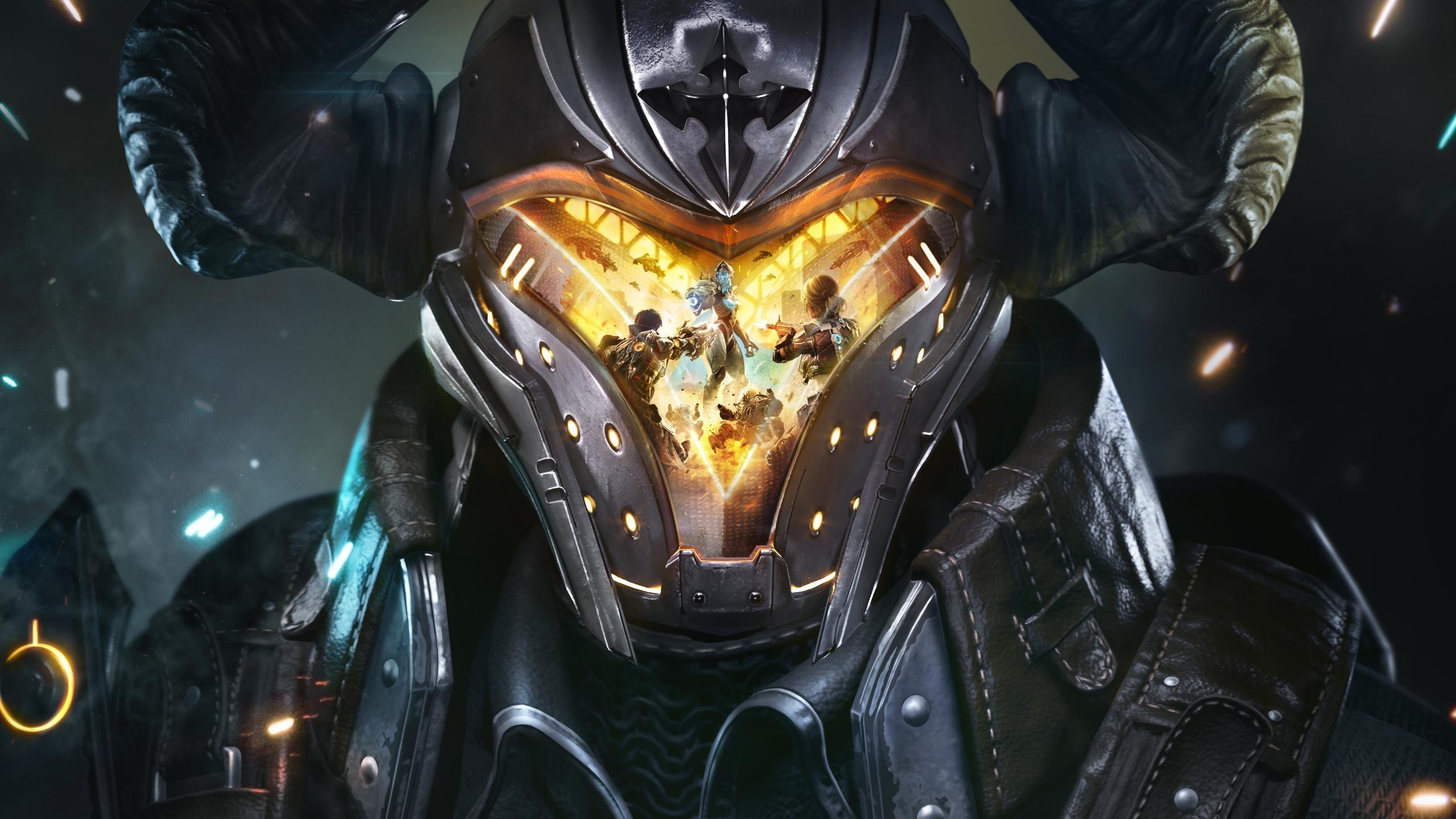The First Descendant is a bad video game that’s occasionally fun. These fleeting moments of joy speak to the potential of the game’s bedrock, where snappy combat ekes out glimpses of delight amidst a torrent of disappointment and frustration. Everything surrounding the game’s fast-paced shooting is painfully dull, tedious, and egregiously predatory. The First Descendant is a free-to-play, third-person looter shooter that feels like it was designed to please shareholders rather than the people playing it. It’s derivative and soulless, bereft of new ideas outside of the myriad ways it attempts to extract money from its player base. It’s a foul example of a game designed around monetization, even in a market saturated with freemium looter shooters.
It doesn’t start on good footing, either. The First Descendant’s story is convoluted and sterile, but the basic premise places you as one of the titular Descendants–a group of humans with unique abilities passed down to them from their fallen ancestors. You’re tasked with fighting for the survival of humanity against an invading alien threat known as the Vulgus, who traveled to the colonized planet of Ingris in search of an infinite energy source.
These interdimensional invaders come in all shapes and sizes, with very little in common regarding their visual design. Some look like gray-skinned humans; others are grotesque creatures with large glowing claws. There are sleek and smooth-edged robots, but also clunky ones, too. Some are made to resemble humanoid lizards, while others are floating orbs that shoot lightning. There’s no cohesion or unifying theme to the Vulgus. Even their names range from Greg to something more alien, like Alzaroke.
This might seem like a minor gripe in the grand scheme of things. If the enemy looks cool, then who cares? But it’s indicative of the game’s poor approach to storytelling and worldbuilding. Maybe a lot of these disparate enemy types are slaves or were sworn to fealty in exchange for their lives. That would heighten the Vulgus threat and explain the dearth of cohesion, but I never encountered anything like this. The story is more concerned with incessantly regurgitating the same plot points and burying you beneath a mountain of laborious jargon, often saying things without saying anything at all. There’s almost no character development or any shred of personality in sight. It doesn’t even end, cutting off at what feels like the halfway point so the story can presumably continue in forthcoming updates. But who wants to see more? The best way to experience The First Descendant’s narrative is by skipping it entirely.
Combat is at least snappy, and the standard assortment of assault rifles, snipers, and shotguns generally feel impactful unless you’re fighting one of the game’s bullet sponge enemies. Seeing numbers pop up as you fill an enemy with lead is as inherently satisfying as it usually is, and each character has access to a grappling hook that lets you zip around the environment and pull yourself toward enemies. The First Descendant is a fairly mobile shooter and incentivizes constant motion, either to avoid incoming fire, venture into a crowd of enemies to unleash AOE attacks or zip to the outskirts of a battle to take out a pesky sniper. The loot you earn from all of this shooting is distinctly bland, however. You’re constantly submerged in so much nebulous loot that most of it feels meaningless. Every assault rifle feels like every other assault rifle, so you’re simply picking whichever gun has the highest DPS and disregarding the rest.
Fortunately, The Descendants and their abilities are varied enough that each one feels unique. There are 14 playable characters in all, five of which have more powerful Ultimate variants. At the beginning of the game, you’re given a choice between one of three starting Descendants. Then you can unlock or purchase the others later, if you so choose.
Each Descendant has four active skills that operate on a cooldown, along with one passive skill. I started with Viessa, who uses ice attacks to deal damage and freeze enemies in place. She’s fine but can’t compare to Bunny, the first new character you unlock. Bunny epitomizes the game’s mobility with her lightning-quick movement and devastating electric attacks. The more she runs, the more electrical energy she accumulates, which you can then unleash in powerful shockwaves. When you’re in full flight, you’re essentially a roving AOE attack, able to weave in and out of enemy groups while zapping them to death. It’s fun, particularly when combined with an SMG or shotgun, although I wish there was some semblance of synergy between each of the Descendants.
You can play the whole game solo, but it’s incredibly easy to join other players in co-op, which feels essential in later missions. Aside from making life easier, however, there’s little difference between playing by yourself or with others. Ajax can deploy a domed shield for everyone to use as cover, but I didn’t encounter another example of a Descendant’s skills working in tandem with others or even benefiting them. Take Valby, for instance. She can liquefy herself, which leaves a trail of water in her wake that damages any enemies standing within it. It would’ve been cool if Bunny could then electrify this water and inflict even more damage, adding a much-needed element of teamwork while also altering the dynamics of combat. But that’s not the case.
Any of The First Descendant’s other positives are quickly undermined by its stale mission design and arduous grind. The game’s basic structure sees you visit various locations where you’re tasked with completing a few short missions in an open area before moving on to a linear, dungeon-esque Operation. These missions consist of the same few objectives over and over again, typically revolving around killing things and standing in circles to hack or defend something or other. It gets tedious fairly quickly and is then extrapolated across a full 35-hour game and beyond (because the endgame also has you repeating these same missions).
It’s incredibly boring and monotonous, and is made worse by the fact that most of these objectives often stifle your class abilities. Bunny needs to be allowed to run free, not be confined to a circle where you’re forced to stand still and shoot waves of incoming enemies. The enemies themselves don’t make this interesting, either, as they are intent on jogging towards you in a straight line. They don’t roll or take cover; they’re mindless drones lining up to be shot. There are a few exceptions to the rule, but even the enemy type that teleports just looks like it’s lagging across the map.
Operations fare slightly better, but even these longer missions still frequently include the same dreary objectives. Worse still, the bosses waiting for you at the end of each one share an identical pattern of events. After depleting their initial health bar, each boss becomes invulnerable, being shielded by floating balls. You need to destroy these balls–sometimes in a specific order, sometimes all at once–to take down their shield and resume dealing damage to their health bar. This is fine the first time you do it, but it repeats on roughly 95% of the bosses you face. Add in the fact that these bosses often share the same attack patterns or simply just stand there and shoot you, and these battles are another terribly dull and exhausting element of The First Descendant’s design.
For as bad as all of this is, it’s made significantly worse by the game’s approach to progression. In order to unlock new Descendants and unique ultimate weapons, you need to gather a bunch of materials to construct each one. Partway through the game, I was given a side quest to unlock a new character called Freyna. This involved playing three missions for the chance to acquire three different materials. I spent almost an hour replaying the same two-minute mission on repeat, just hoping to receive an item with a 20% drop rate. After that, I did the same with an Operation, spending over an hour repeating the same mission waiting for the material I needed to drop.
My reward for trudging through the same banal missions was a new character that I then needed to wait 16 hours before I was allowed to use. Not only is this mind-numbingly dull, but this vapid approach also encourages toxicity. I encountered a few occasions where a player remained idle throughout an entire Operation, presumably sick of having to play the same mission ad nauseam. All of this seems to be by design, as the workaround is to relent at the sheer tedium of it all and spend real money to expedite the process and gain immediate access.
The First Descendant’s storefront is inundated with an overwhelming amount of things you can purchase with real money. There’s a tab dedicated solely to “Convenience,” offering boosts to speed up the deliberate inconvenience of the game’s grind. You can pay to decrease the timer that’s placed on everything you unlock; pay to unlock more mod slots, which directly correlates to how powerful your character is; pay to unlock Descendants themselves, who vary in price but always cost just over the amount of in-game currency you’re allowed to buy, forcing you to pay more. If you want an Ultimate version of a Descendant–which comes with increased stats, additional mod slots, more powerful attacks and skills, and a few skins–it will set you back around $104.
You can unlock Ultimate Descendants by playing the game, but then you’re looking at sub-3% drop rates on all of the materials you need. It’s obscene, especially when the game also has a premium battle pass and no shame about exploiting practices like restricting single-use armor dye to one piece of clothing. And while it may not be a competitive shooter, those who bypass the game’s grind still create a significant imbalance during Operations. Powerful characters, particularly if they’re speed-based, can blaze through these linear levels to the point where other players won’t even see an enemy. The entire game is built to make you want to acquiesce and part with your hard-earned cash. A $10 Descendant starts to look mightily appealing when the only other option is mindlessly soul-crushing, and that’s the whole point.
The First Descendant has moments of fun, but its action is constantly debilitated by tiresome mission design and a grind entirely informed by its venomous monetization. It’s designed to frustrate and steer players toward an extensive storefront that lets you circumvent some of its monotony, only to be met with even more. There are no redeeming features to its intentionally infuriating free-to-play model; it feels like a game designed in a boardroom, where every single aspect of its design is secondary to the pursuit of making more money. It’s a sad state of affairs, and I wouldn’t recommend The First Descendant to anyone.

